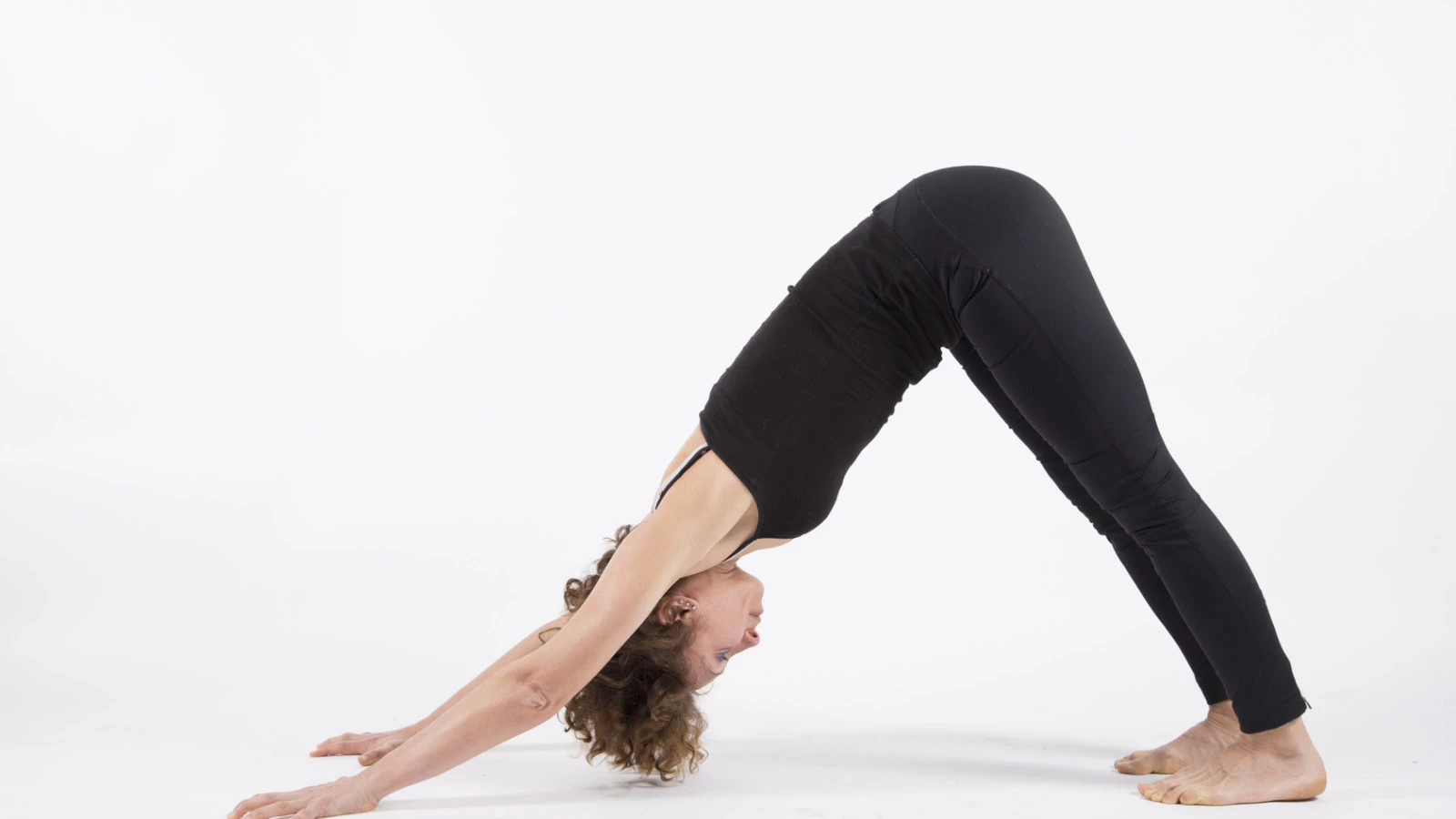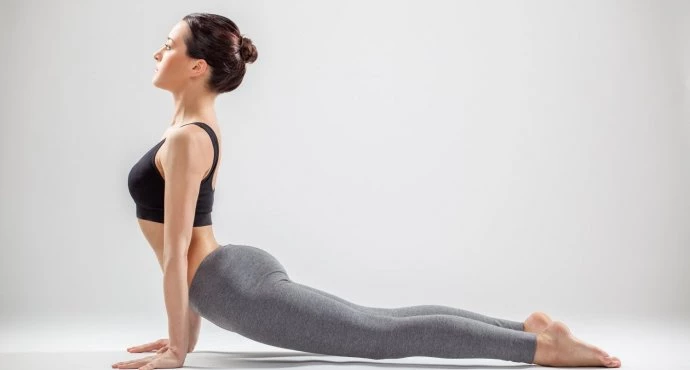Keys to Healthy Alignment in Downward Dog (Adho Mukha Svanasana) and Upward Dog (Urdhva Mukha Svanasana)

The dog poses, Downward-Facing Dog (Adho Mukha Svanasana) and Upward-Facing Dog (Urdvha Mukha Svanasana), are among the most commonly practiced postures in yoga classes. For some people, they are freeing and exhilarating poses, but let’s face it, for others, they are the bane of their yoga existence.
Whether or not you like the dog poses, they’re fundamental to Vinyasa (flow) practice. They help one connect sequential yoga postures in a calm, controlled manner. Execute the dog poses efficiently in a way that works for your body, and you’ll reap the many amazing benefits that they have to offer. You’ll be able to enjoy an exhilarating Vinyasa practice for years to come!
Execute them in ways that strain your muscles and joints, and you’ll be asking for injuries or other medical complications in the long run. Your active asana practice, as well as other physical activity and general physical functioning, might just be shortchanged.
How to Find Good Alignment and Ease in Downward-Facing Dog Pose (Adho Mukha Svanasana)
To set you up for success in these poses, follow these steps. Make sure that you’re decently warmed up, or if you’re not, don’t start by moving into these poses as deeply as you normally might.
1. Come to Tabletop or Plank Pose. Push into every little  centimeter of your fingers and palms as if trying to push open a heavy door. Spread your fingers as wide as you can. Both those things will prevent over-straining your wrists as you bear weight on them in these postures.
centimeter of your fingers and palms as if trying to push open a heavy door. Spread your fingers as wide as you can. Both those things will prevent over-straining your wrists as you bear weight on them in these postures.
2. Rotate your biceps out and your triceps back. Hug your arm bones toward each other. Both those things will broaden and stabilize your shoulders across your back, keeping them happy and healthy.
3. Pull in your low belly towards your spine so that it can protect your spine from hyperextending. That can prevent wear-and-tear back pain and other complications down the road.
4. Keep all of that the same as you raise your hips to Downward-Facing Dog. There’s a tendency to lose the biceps forward-triceps back (external rotation) action as we come into Downward-Facing Dog (especially with flexible upper backs), so take care to maintain this rotation.
5. Feel your hips rising higher to the sky; with that, more of the posture’s muscular effort goes into your legs, rather than mostly in your arms. The lower body has more capability than the upper body to sustain holding the body’s weight against gravity. Use your arms to help extend your weight back into your feet.
6. Lift your forearms (without changing how they’ve been activating) and push your thighs back. As you do that, engage your quadriceps to lift your kneecaps. That will prevent straining any of the knees’ architecture and further stabilize you in the posture.
7. Check to make sure that you’re not overarching your low back (creating a “swayback”). If that’s hard to feel, have a knowledgeable fellow practitioner or instructor observe you.
All these pointers will make the triangle underneath you, rather than the space above you, larger. That’s a good marker for making sure that you can do Downward-Facing Dog for years!
Making the Transition From Downward-Facing Dog Pose to Upward-Facing Dog Pose (Urdhva Mukha Svanasana)
When you would like to move on from Downward Dog, roll yourself to Plank Pose, continuing to pull your low belly in and roll your triceps back all along! Flip your toes, and then lift your chest up and forward to Upward-Facing Dog.  That order of actions will help protect your lower back through the transition.
That order of actions will help protect your lower back through the transition.
1. In Upward-Facing Dog, feel all ten toes grounding into your mat (or whatever surface is below you), but don’t let your ankles roll outward. Keep firming your quadriceps to keep your knees in place. That will keep everything in parallel alignment and thus safely supported.
2. Feel your heart space drawing up, back, and forward, but check that your shoulders aren’t hanging forward of your wrists (which can seriously strain them). Like any backbend, the arch of the shape comes from your heart space.
3. Feel your belly drawing in and towards your pubic bone in order to protect your spine. Some practitioners like to throw their heads back in Upward-Facing Dog, but instead, look straight forward to avoid overarching your neck. This will also help you keep a focused, and potentially quite calming, drishti straight ahead.
It’s certainly true that we want to stay focused on the present moment in yoga practice. In fact, cultivating the ability to do just that is one of its main benefits. At the same time, we can be mindful of practicing in ways that will keep our bodies safe and strong enough to continue practicing for many more years.
An ounce of prevention is worth a pound of cure, as the saying goes. Among the many things that yoga practice can teach us about our lives off the mat, we can see that it’s better to operate in ways that prevent problems before they even exist. Here’s to many years of practicing the dog poses and many other postures!
Kathryn Boland is an RCYT and R-DMT (Registered Dance/Movement Therapist). She is originally from Rhode Island. She attended George Washington University (Washington, DC) for an undergraduate degree in Dance (where she first encountered yoga), and Lesley University for an MA in Clinical Mental Health Counseling, Expressive Therapies: Dance/Movement Therapy. She has taught yoga to diverse populations in varied locations. As a dancer, she has always loved to keep moving and flowing, practicing more active Vinyasa-style forms. Her interests have recently evolved to include Yin and therapeutic yoga, and aligning those forms with Laban Movement Analysis to serve the needs of various groups (such as Alzheimer’s Disease patients, children diagnosed with ADHD, and PTSD-afflicted veterans – all of which are demographically expanding). She believes in finding the opportunity within every adversity and doing all that she can to help others live with a bit more breath and flow!


